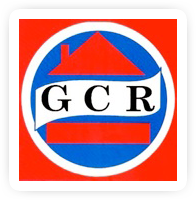Stafford Township
Area: 54.8 square miles which includes 46.5 square miles of land and 8.3 square miles of water
Population: 26,535
Type of Government: Mayor and six member council
Type of Housing: Older Victorian-style homes and country farmhouses line the center of town, and brand new homes can be found as well, particularly on lagoons leading to the Barnegat Bay.
Schools: For grades K through 6, students attend the Stafford Township School District. The Primary Learning Center [1] is for Kindergarten, and Ocean Acres School with 736 students and Oxycocus School serves grades 1 and 2. McKinley Avenue School serves grades 3 and 4, and Stafford Intermediate School grades 5 and 6. For grades 7 through 12, students attend the Southern Regional Middle School (grades 7 and 8) and Southern Regional High School (grades 9 – 12). These schools are part of the Southern Regional School District.
Shopping and Recreation: Abundant outdoor pursuits, including swimming, sunbathing, sailing, fishing, crabbing, and clamming in Barnegat Bay and the Atlantic Ocean. Ocean Acres Country Club, featuring an 18-hole public golf course. Several shopping and service centers provide all the necessities for good living. Stafford Pool and Fitness Center. Stafford Township Baptist Church Museum recounts the region’s exciting role in the American Revolutionary War.
Brief History: The first tracts of land in Stafford Township were purchased in 1735, according to Jack Cervetto’s “A Brief History of Stafford Township”. Before sailing from Staffordshire, England, James Haywood, Perry Paul and Luke Courtney purchased the land. They settled in Manahawkin in 1743.
According to local lore, the name Manahawkin is Lenne Lenape for good corn land.
Stafford Township used to be part of Monmouth County; it was the first township set off from Shrewsbury Township in 1749. The area of Stafford ran all the way from Oyster Creek, Waretown, in the north, to Eagleswood and Little Egg Harbor in the south, and from Long Beach Island in the east to Burlington in the west.
Stafford’s first government included two commissioners of the highways, one overseer of the poor, one assessor, one township collector and one constable, all of whom were chosen by the populace annually.
The first water-powered sawmills were in Manahawkin, Wells Mills and Cedar Bridge. Business in the township included boat-building, farming, oystering, and clamming.
Stafford was home to the first house of worship on Ocean County. It was the First Baptist Church Society, and it was also Stafford’s only school until 1800. The children studied the Holy Bible as their only school book.
Some familiar names-Cranmer and Shinn-can be traced back to prior to the turn of the century. Charles H. Cranmer was a successful businessman and started a general store on Route 9 in 1880. When he retired, he passed it on to his clerk, Woodie Shinn. Cranmer also went into the real estate business and served as a township committeeman.
Cranberry bogging became an industry in Stafford in 1880, when a man named Webb experimented with cranberry plants and set up a patch along the edge of a cedar swamp. By 1900, there were thousands of acres of cedar swamps converted into cranberry bogs, which had to be flooded with water in the winter to protect the vines from freezing. One of the most famous cranberry bogs, now hidden in forest at the end of Oxycoccus Road, belonged to historian/explorer/writer, Nathaniel Holmes Bishop. Other bogs, no longer farmed, can be seen along Route 9 in Cedar Run.
Stafford Township Phone Numbers
- Township of Stafford – 609-597-1000
- Comcast – 609-597-3421
- Atlantic City Electric – 800-642-3780
- N.J. Natural Gas – 800-221-0051
- Verizon – 800-427-9977
